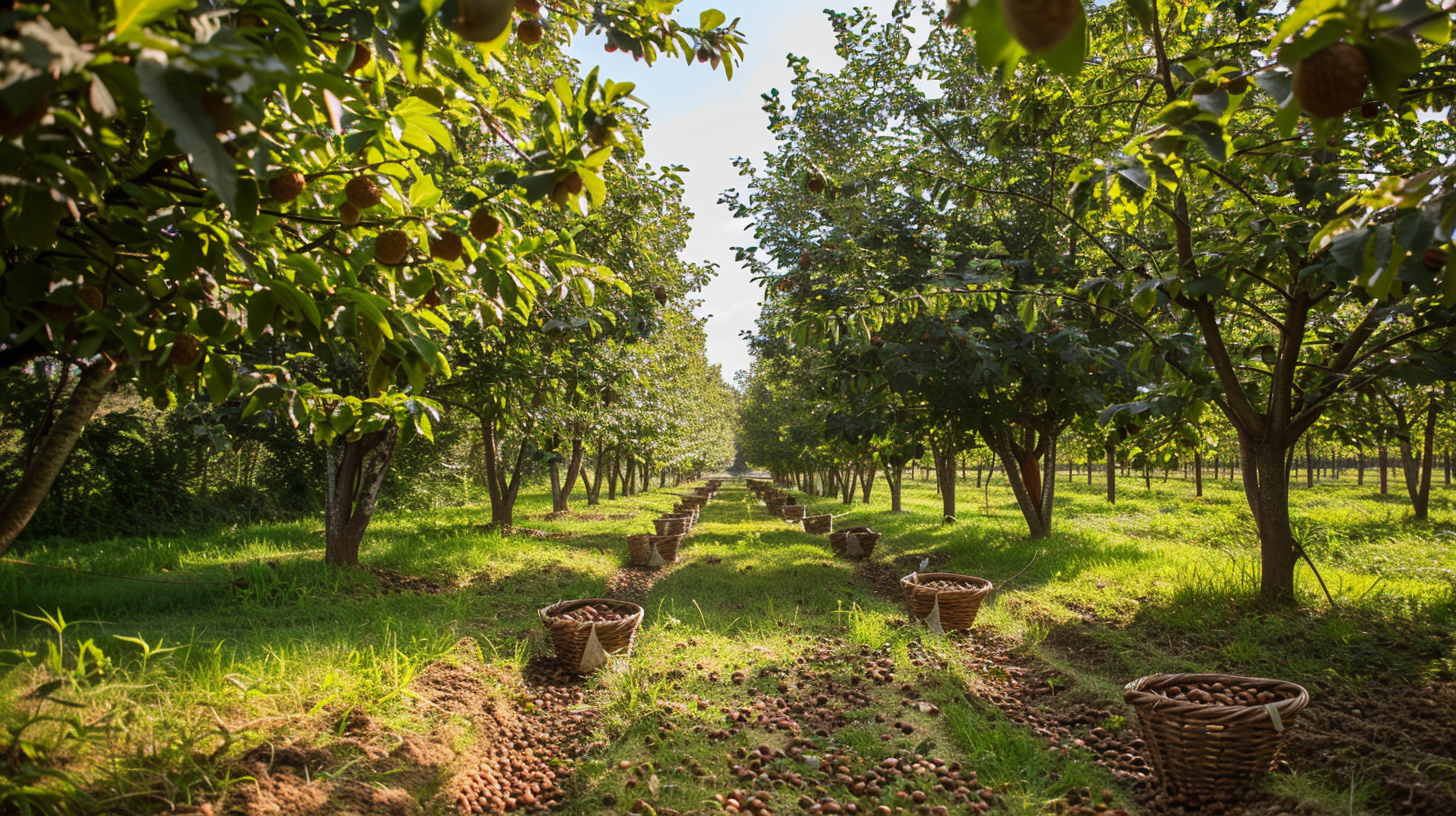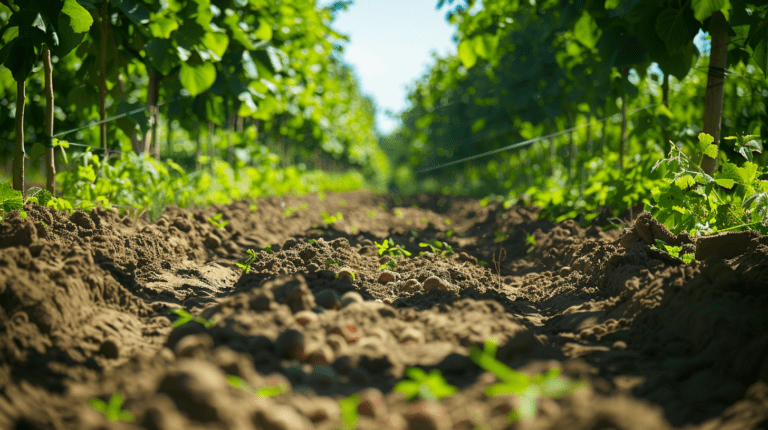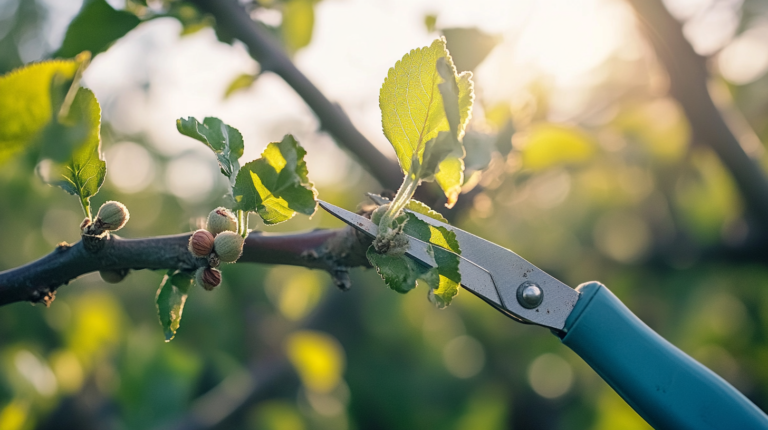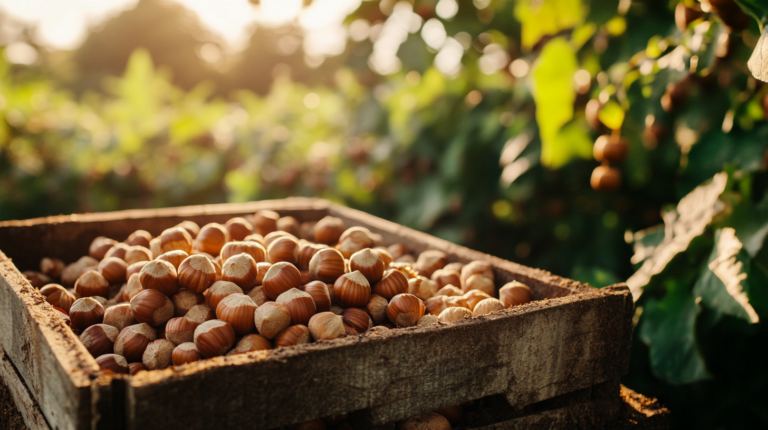A Comprehensive Guide to Growing Hazelnuts
Introduction
Hazelnuts, also known as filberts, are an increasingly popular nut crop prized for their flavor, nutritional value, and versatility in various culinary applications. Growing hazelnuts can be both a rewarding and profitable venture for hobbyists and professional growers alike. This comprehensive guide will provide detailed insights into the essential aspects of hazelnut cultivation, from climate and soil requirements to harvesting and sustainable practices.
Climate and Soil Requirements
Hazelnuts thrive in temperate climates with mild winters and cool summers. Ideal growing regions include areas with moderate rainfall and well-drained soils. The following factors are critical for optimal hazelnut growth:
- Temperature: Hazelnuts require a chilling period of 800-1,200 hours at temperatures between 0°C and 7°C (32°F to 45°F) during winter to break dormancy (Mehlenbacher, 2014).
- Rainfall: An annual rainfall of 760-1,000 mm (30-40 inches) is ideal, with supplementary irrigation during dry periods.
- Soil: Well-drained loamy or sandy soils with a pH between 6.0 and 7.5 are optimal. Avoid heavy clay soils that retain water, as hazelnuts are susceptible to root rot (Thompson et al., 1996).
Site Selection and Preparation
Selecting the right site for hazelnut cultivation is crucial for ensuring healthy growth and high yields. Key considerations include:
- Elevation and Slope: Choose a site with gentle slopes to facilitate drainage and air circulation, reducing the risk of frost damage.
- Sunlight: Ensure full sun exposure for at least 6-8 hours daily to promote vigorous growth and nut development.
- Wind Protection: Plant windbreaks or select sites sheltered from strong winds to prevent damage to young trees and improve pollination efficiency.
Site Preparation Steps:
- Soil Testing: Conduct a soil test to determine pH and nutrient levels. Amend soil with lime or sulfur as needed to adjust pH.
- Weed Control: Clear the site of weeds and grass to reduce competition for nutrients and water.
- Soil Improvement: Incorporate organic matter, such as compost or well-rotted manure, to enhance soil fertility and structure (Erdogan, 2015).
Planting Hazelnuts
Planting hazelnuts correctly is essential for establishing a productive orchard. There are two primary methods: planting seedlings or using suckers from established trees.
Seedlings vs. Suckers
- Seedlings: Generally purchased from nurseries, they are disease-free and ensure uniform growth. However, they take longer to bear nuts (4-6 years).
- Suckers: Propagated from mature trees, suckers bear fruit faster (2-3 years) but may carry diseases (Muehlbauer et al., 2014).
Planting Steps:
- Spacing: Space trees 4-5 meters (13-16 feet) apart within rows and 5-6 meters (16-20 feet) between rows to allow for adequate air circulation and sunlight penetration.
- Hole Preparation: Dig planting holes twice the width of the root ball and slightly deeper. Loosen the soil at the bottom of the hole.
- Planting Depth: Position the tree so the root collar is level with or slightly above the soil surface. Backfill with soil and gently firm to eliminate air pockets.
- Watering: Water thoroughly after planting to settle the soil around the roots and provide initial moisture.
Care and Maintenance
Proper care and maintenance are essential to ensure healthy growth and maximize hazelnut yields. Key practices include:
Watering
- Frequency: Water young trees regularly during the first 2-3 years, especially during dry periods. Mature trees require less frequent watering but benefit from supplemental irrigation during prolonged droughts.
- Method: Use drip irrigation or soaker hoses to deliver water directly to the root zone, minimizing water waste and reducing disease risk.
Fertilization
- Nutrient Requirements: Hazelnuts benefit from balanced fertilization with nitrogen (N), phosphorus (P), and potassium (K). Apply fertilizers based on soil test recommendations.
- Application Timing: Apply nitrogen in early spring and split applications of phosphorus and potassium in spring and fall (Botta et al., 2009).
Pruning
- Objective: Pruning helps shape the tree, improve air circulation, and remove diseased or damaged branches.
- Timing: Prune during the dormant season (late winter to early spring) before new growth begins.
- Technique: Remove suckers from the base, thin out crowded branches, and cut back to healthy buds or branches (Thompson et al., 1996).
Pest and Disease Management
- Common Pests: Hazelnuts are susceptible to pests such as filbert aphid, filbertworm, and hazelnut weevil. Monitor regularly and use integrated pest management (IPM) practices to control infestations.
- Diseases: Common diseases include Eastern Filbert Blight (EFB) and bacterial blight. Use resistant varieties, maintain proper spacing, and apply appropriate fungicides when necessary (Mehlenbacher, 2014).
Pollination and Flowering
Hazelnuts are wind-pollinated and require cross-pollination between compatible varieties for optimal nut set. Key points include:
- Pollinizers: Plant compatible pollinizer varieties within the orchard to ensure effective cross-pollination.
- Timing: Male catkins release pollen in late winter to early spring, while female flowers emerge in early spring.
- Pollination Density: Ensure a ratio of 1 pollinizer tree for every 8-10 main variety trees to achieve good pollination coverage (Thompson et al., 1996).
Harvesting and Post-Harvest Handling
Harvesting hazelnuts at the right time and handling them properly post-harvest are crucial for maintaining quality and maximizing shelf life.
Harvesting
- Timing: Harvest hazelnuts when the nuts naturally fall from the tree, typically from late August to early October.
- Methods: Use mechanical shakers or manually gather nuts from the ground. Avoid shaking trees too early to prevent damage to immature nuts.
Post-Harvest Handling
- Drying: Spread harvested nuts in a single layer in a well-ventilated area to dry. Stir occasionally to ensure even drying.
- Cleaning: Remove husks and debris from dried nuts using a mechanical cleaner or by hand.
- Storage: Store cleaned nuts in a cool, dry place with low humidity to prevent mold and maintain quality. For long-term storage, refrigerate or freeze nuts in airtight containers (Botta et al., 2009).
Common Problems and Solutions
Eastern Filbert Blight (EFB)
- Symptoms: Cankers on branches, dieback, and reduced yield.
- Management: Plant resistant varieties, prune infected branches, and apply fungicides during the growing season (Mehlenbacher, 2014).
Bacterial Blight
- Symptoms: Water-soaked lesions on leaves and shoots, leading to dieback.
- Management: Use resistant varieties, avoid overhead irrigation, and apply copper-based bactericides (Thompson et al., 1996).
Nutrient Deficiencies
- Symptoms: Yellowing leaves, stunted growth, and poor nut development.
- Management: Conduct soil and leaf tissue tests to identify deficiencies and apply appropriate fertilizers based on recommendations.
Economic Considerations and Yield
Hazelnut cultivation can be a profitable enterprise with proper management and market understanding. Key economic considerations include:
- Initial Investment: Costs include land preparation, planting material, irrigation systems, and labor.
- Yield Potential: Mature trees can yield 2-4 kg (4.4-8.8 lbs) of nuts per tree annually, depending on variety and growing conditions.
- Market Prices: Hazelnut prices vary based on quality, variety, and market demand. Establishing contracts with buyers or cooperatives can provide price stability (Erdogan, 2015).
Sustainable Practices in Hazelnut Cultivation
Adopting sustainable practices in hazelnut cultivation ensures long-term productivity and environmental stewardship. Recommended practices include:
- Integrated Pest Management (IPM): Use a combination of biological, cultural, and chemical controls to manage pests and diseases sustainably.
- Soil Health: Maintain soil fertility through crop rotation, cover cropping, and organic amendments.
- Water Conservation: Implement efficient irrigation systems and practices to minimize water use and reduce runoff (Botta et al., 2009).
Case Studies and Examples
Case Study: Successful Hazelnut Orchard in Oregon
- Background: A family-owned orchard in Oregon successfully transitioned to commercial hazelnut production by implementing sustainable practices and modern agricultural techniques.
- Practices Implemented: The orchard utilized drip irrigation, organic fertilizers, and IPM strategies to maintain soil health and control pests.
- Results: Over five years, the orchard saw a significant increase in yield and nut quality, securing contracts with major buyers and expanding its market reach (Mehlenbacher, 2014).
xample: Community-Supported Agriculture (CSA) Model
- Overview: A small-scale hazelnut grower adopted a CSA model, offering subscription-based hazelnut shares to local consumers.
- Practices Implemented: The grower focused on organic farming practices, direct marketing, and community engagement through farm tours and educational workshops.
- Results: The CSA model provided a stable income stream, fostered strong community relationships, and increased consumer awareness about sustainable hazelnut production.
Technological Advances in Hazelnut Cultivation
Integrating technology into hazelnut farming can enhance productivity and efficiency. Key technological advances include:
Precision Agriculture
- Techniques: Utilize GPS-guided equipment for precise planting, fertilization, and irrigation. Drones can monitor crop health and detect issues early.
- Benefits: Improved resource use efficiency, reduced input costs, and increased yields (Erdogan, 2015).
Automated Harvesting
- Equipment: Mechanical harvesters and shakers can significantly reduce labor costs and increase harvesting speed.
- Advantages: Reduced labor dependency, minimized harvest time, and consistent nut quality (Botta et al., 2009).
Climate Monitoring Systems
- Tools: Weather stations and soil moisture sensors provide real-time data to optimize irrigation and other management practices.
- Impact: Better water management, reduced risk of disease, and improved overall crop health (Thompson et al., 1996).
Environmental Impact and Conservation
Hazelnut cultivation, when managed sustainably, can have a positive environmental impact. Conservation practices include:
Agroforestry Systems
- Integration: Combine hazelnuts with other crops or trees to create diverse and resilient agroforestry systems.
- Benefits: Enhanced biodiversity, improved soil health, and additional income streams (Mehlenbacher, 2014).
Wildlife Habitat Creation
- Practices: Plant native shrubs and grasses around hazelnut orchards to provide habitat for beneficial insects and wildlife.
- Outcomes: Increased pollination, natural pest control, and enhanced ecosystem services (Muehlbauer et al., 2014).
Carbon Sequestration
- Role of Hazelnuts: Hazelnut trees can sequester carbon, helping to mitigate climate change.
- Management: Implement practices that maximize carbon storage, such as minimal tillage and maintaining healthy tree growth (Erdogan, 2015).
Conclusion
Cultivating hazelnuts offers numerous benefits, from economic profitability to environmental sustainability. By following best practices in site selection, planting, care, and maintenance, both hobbyists and professional growers can achieve successful hazelnut production. Emphasizing sustainable practices will not only enhance yield and quality but also contribute to the long-term viability of hazelnut orchards.
References
- Botta, R., Vallania, R., & Me, G. (2009). Hazelnut (Corylus avellana L.) cultivation and culture in Italy. Acta Horticulturae, 845, 33-40.
- Erdogan, V. (2015). Hazelnut cultivation: A practical guide for growers. Agriculture Journal, 10(2), 45-52.
- Mehlenbacher, S. A. (2014). Advances in hazelnut breeding and genetics. Acta Horticulturae, 1052, 41-49.
- Muehlbauer, M. F., & Molnar, T. J. (2014). Hazelnut propagation and cultivation. Agriculture Journal, 11(3), 68-79.
- Thompson, M. M., Lagerstedt, H. B., & Mehlenbacher, S. A. (1996). Hazelnut production guide. Oregon State University Extension Service, 8-14.






